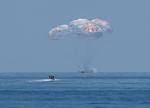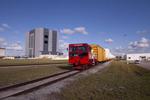Other

“On July 4, NASA’s Transiting Exoplanet Survey Satellite (TESS) finished its primary mission, imaging about 75% of the starry sky as part of a two-year-long survey. In capturing this giant mosaic, TESS has found 66 new exoplanets, or worlds …

“Two NASA astronauts splashed down safely in the Gulf of Mexico Sunday for the first time in a commercially built and operated American crew spacecraft, returning from the International Space Station to complete a test flight that marks a new …
“NASA astrophysicists and engineers are adapting detectors used by earthbound supercolliders and creating them the same way electronics companies produce all modern consumer devices, including cell phones and laptops. The new pixel-based silicon detector technology could be used on next-generation …

“The agency’s Mars 2020 mission is on its way. It will land at Jezero Crater in about seven months, on Feb. 18, 2021. NASA’s Mars 2020 Perseverance rover mission is on its way to the Red Planet to …

“Work has begun on an ambitious new mission that will carry a cutting-edge 8.4-foot (2.5-meter) telescope high into the stratosphere on a balloon. Tentatively planned to launch in December 2023 from Antarctica, ASTHROS (short for Astrophysics Stratospheric Telescope …
“The system, known as AU Mic for short, provides a one-of-a-kind laboratory for studying how planets and their atmospheres form, evolve and interact with their stars. “AU Mic is a young, nearby M dwarf star. It’s surrounded by a …

“The rocket booster segments that will help power NASA’s first Artemis flight test mission around the Moon arrived at the agency’s Kennedy Space Center in Florida on Monday for launch preparations. All 10 segments for the inaugural flight …

“For the first time in history, NASA astronauts have launched from American soil in a commercially built and operated American crew spacecraft on its way to the International Space Station. The SpaceX Crew Dragon spacecraft carrying NASA astronauts Robert Behnken …

“A large near-Earth asteroid will safely pass by our planet on Wednesday morning, providing astronomers with an exceptional opportunity to study the 1.5-mile-wide (2-kilometer-wide) object in great detail. The asteroid, called 1998 OR2, will make its closest approach at …

“Black holes aren’t stationary in space; in fact, they can be quite active in their movements. But because they are completely dark and can’t be observed directly, they’re not easy to study. Scientists have finally figured out …
